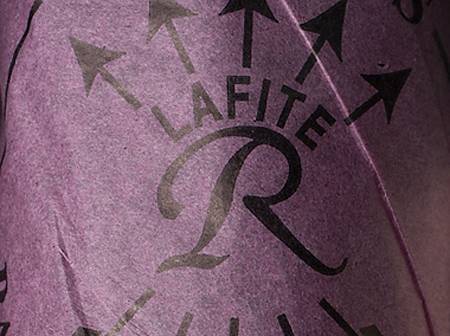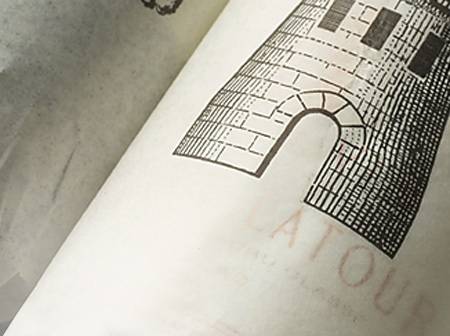- Colour Red
- Producer Château Smith Haut Lafitte
- Region Pessac-Léognan
- Drinking 2029 - 2042
- Case size 6x75cl
- Available En Primeur
2022 - Ch Smith Haut Lafitte Grand Cru Classé Pessac-Léognan - 6x75cl
- Colour Red
- Producer Château Smith Haut Lafitte
- Region Pessac-Léognan
- Drinking 2029 - 2042
- Case size 6x75cl
- Available En Primeur
Need help? Call +44 (0)20 7793 7900 or email wine@goedhuiswaddesdon.com.
-
Neal Martin, April 2023, Score: 95-97
The 2022 Smith Haut Lafitte was cropped at 29hL/ha between 5 and 30 September, undergoing half the extraction, aged in 60% new oak for a planned 18 months. It is fragrant and very pure on the nose: beautiful blackberry, raspberry and liquorice. The palate is medium-bodied with pliant tannins, very elegant and focused, fine-boned with an exceptionally pure and caressing tobacco-tinged finish. This is going to grow to be a wonderful, delicious Smith Haut Lafitte. 14.5% alcohol. Drink 2030-2065
-
Wine Advocate, April 2023, Score: 94-95
The 2022 Smith Haut Lafitte opens in the glass with attractive aromas of cassis, spices, tobacco, graphite and licorice, followed by a medium to full-bodied palate that is deep and layered, with good depth and powdery structuring tannins that assert themselves on the finish. This blend of 65% Cabernet Sauvignon, 32% Merlot, 3% Cabernet Franc and 1% Petit Verdot will require some patience, given its somewhat extracted style.
-
Antonio Galloni, April 2023, Score: 95-97
The 2022 Smith Haut Lafitte is a regal, elegant wine. Succulent inky fruit, licorice, spice, lavender and mocha open in a gracious, sublime Grand Vin. Here, too, the wine’s persistence and energy are notable. The Cabernet is especially evident this year, in both the wine’s flavor profile and overall structural feel. In many vintages, the Grand Vin is more immediate and alluring. The 2022 is quite reticent. Drink 2030-2042.
-
Goedhuis, April 2023, Score: 93-95
The weather conditions in 2022 were much kinder to the organic and biodynamic farming practices at Smith and yields were up nearly 25% from the lows of last year. Technical director Fabien Teitgen was all smiles, particularly so given the devasting smoke from the July forest fires blew southwest, away from Pessac-Leognan. The nose is all sandalwood and lacquer notes that flow along with the perfumed morello cherries, ripe blackcurrant leaf and bilberry touches. The wood influence continues on the palate, with a saline almost creamy texture, and wood tannins riding beneath the nicely ripe fruit. The acidity gives it great freshness and, with the impressive body here, this has everything to play for.
-
James Suckling, April 2023, Score: 97-98
The polish, texture, complexity and patina are very impressive and fascinating. So spicy and interesting with so much going on. Medium body with wonderfully integrated tannins that are cut and nicely chiselled already. Lemon and violet. 64% cabernet sauvignon, 32% merlot, 3% cabernet franc and 1% petit verdot.
-
Jancis Robinson, April 2023, Score: 18
Dark, glossy blackish purple. Glossy, glamorous impression on the nose. Very juicy and extremely sweet. Very flattering with masses of fruit almost covering the very ripe tannins. This should be drinkable very early but should also last well. Notably long. Velvety texture but with the freshness of Graves. Lovely wine. Drink 2030 – 2050
-
Jeb Dunnuck, April 2023, Score: 96-98
Moving to the Grand Vin, the 2022 Château Smith Haut Lafitte checks in as 64% Cabernet Sauvignon, 32% Merlot, 3% Cabernet Franc, and the rest Petit Verdot. This ripe, powerful, concentrated wine reminds me of the 2010 with its structure, concentrated mid-palate, and just sheer density and regal, full-bodied style on the palate. Despite its size, it stays balanced, has a beautiful perfume of sweet black fruits, graphite, scorched earth, and spring flowers, building tannins, and a great, great finish.
-
Matthew Jukes, April 2023, Score: 17.5
I enjoyed every second of my visit at Smith Haut Lafitte because all six wines are tremendous. I feel that Pessac-Léognan had a tough time of it in 2022, yet a handful of Château, all listed in this Report, have made stellar wines. Cellarmaster Yann Laudheo was at pains to explain that no extraction was used at SHL in 2022, just ‘infusion’, which is vital to these wines’ success. In fact, he ‘tastes the juice and eats the cap every day’ to precisely monitor how his wines gather shape and style. The Grand Vin at Smith Haut Lafitte is incredibly luxurious, velvety and buoyant, with glossy layers and tremendous freshness along its minutes-long finish. The tannins are profound and firm, but they are also smooth, cultured and vibrant. This is a fantastic wine, full of opposites, with layers and layers of graphite, black fruit, chocolate and woodsmoke. It is indulgent, staggeringly long and beautifully balanced. I have not tasted red wine with these dimensions from SHL before and cannot recommend it enough.
Producer
Château Smith Haut Lafitte
Equally known for its red and white wines, Smith Haut Lafitte is particularly notable for producingclean, concentrated and consistent wines - qualities which have enabled it to be one of the mostpopular châteaux in the Graves region.
Region
Pessac-Léognan
Stretching from the rather unglamorous southern suburbs of Bordeaux, for 50 km along the left bank of the river Garonne, lies Graves. Named for its gravelly soil, a relic of Ice Age glaciers, this is the birthplace of claret, despatched from the Middle Ages onwards from the nearby quayside to England in vast quantities. It can feel as though Bordeaux is just about red wines, but some sensational white wines are produced in this area from a blend of sauvignon blanc, Semillon and, occasionally, muscadelle grapes, often fermented and aged in barrel. In particular, Domaine de Chevalier is renowned for its superbly complex whites, which continue to develop in bottle over decades. A premium appellation, Pessac-Leognan, was created in 1987 for the most prestigious terroirs within Graves. These are soils with exceptional drainage, made up of gravel terraces built up in layers over many millennia, and consequently thrive in mediocre vintages but are less likely to perform well in hotter years. These wines were appraised and graded in their own classification system in 1953 and updated in 1959, but, like the 1855 classification system, this should be regarded with caution and the wines must absolutely be assessed on their own current merits.




